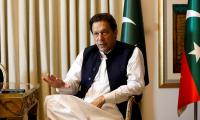This time last year, the question was whether Novak Djokovic would win another major. 12 months later, the question really is: can Djokovic overtake Federer’s tally of most majors? In fact, some might even argue that the real question is just how far ahead of Federer and Rafael Nadal the Serb would end up when all is said and done.
The prevalence of knee-jerks in sports notwithstanding, Djokovic is absolutely standing alone at the summit of men’s tennis as things stand. And one can’t see where any potential halt for his juggernaut is going to come from.
Last Sunday, Djokovic won a seventh title at the Australian Open – his most successful Grand Slam event. With another four Wimbledon titles, three at the US Open and one French, his tally now stands alone at third on the all-time list with 15 Grand Slam titles as he overtook Pete Sampras’ once record number of 14 majors.
Djokovic is now five behind Federer (20) and two behind Nadal (17) on the all-time list, as the Big Three of this era firmly establish themselves as the Big Three of all time. But which of these three maestros is the Greatest of All Time (GOAT)?
Indeed, a definitive answer can only be given – if at all, given the many variables – once each of the three hangs up his raquet. However, till that moment comes – and tennis fans would love nothing more than for that eventuality to be prolonged as much as possible – the GOAT debate would continue to simmer on.
A decade ago, Federer seemed to be steamrolling everyone on his way towards GOATness as he had virtually no challenger from 2003 to 2007 outside of clay. Then came Nadal with titles at Wimbledon and Australian Open in 2008/09 to enter the debate. Federer completed the career Grand Slam at the French Open in 2009, and Nadal did the same – and became the youngest to do so – at the US Open 2010.
At the end of 2010, it appeared as though it would be Fedal who would be slugging it out for GOATness over the next few years. That’s when Djokovic arrived big time.
The Serb’s 2011 season, where he won the Australian, Wimbledon and US Open titles, was one of the greatest years on the ATP tour. It was then that he had a 7-0 streak against Nadal which turned around their rivalry in Djokovic’s favour, as the Serb beat the Spaniard in seven consecutive finals including three successive majors – Wimbledon, US Open and then the Australian Open 2012.
However, 2012 saw the rise of Andy Murray who truly made it a Big Four – even if temporarily – by winning the US Open and the Olympic Gold. 2012 remains the only year each of the Big Four won a major each.
2013 saw Nadal’s resurgence as he not only mopped up the clay season, but swept the North American hard court swing as well culminating in the US Open win, ending the year as the World No 1 for the third time after 2008 and 2010.
2014 saw first-time major winners in StanislasWawrinka (Australian Open), who would go on to win two more Grand Slam titles, and Marin Cilic (US Open). There were murmurs of perhaps new faces finally emerging at the summit.
Those ideas were ruthlessly quashed when Djokovic became the first player in the Open era to hold all four majors at the same time as he won each of the Grand Slam titles in a staggering run from Wimbledon 2015 to French Open 2016.
The latter completed his career Grand Slam as well, and firmly put him in the GOAT mix. Perhaps it was the aftereffects of the fulfillment of a marathon achievement, but the French Open win in 2016 also initiated a two-year barren spell for Djokovic, which eventually saw the Serb dropping out of the Top 20.
Murray finished 2016 as the World No 1, followed by Nadal in 2017. Fedal split the six majors from Australian Open 2017 to French Open 2018 – as Federer won his first major in five years, and Nadal won his first non-clay major in four years.
Since then, Djokovic has won all of the three Grand Slam titles and regained the number one ranking at the end of 2018 as well. Last year, Djokovic also became the only player to win each of the ATP 1000 Masters titles and now stands only one behind Nadal (33) on the all-time list at 32.
While the number of major titles has for long been considered the greatest benchmark for GOATness, all things considered Djokovic has a pretty strong case even if none of the Big Three holds a racquet again.
Let’s not forget that his 15 majors have come in the toughest era of all time. Furthermore, he has a winning head to head against all of his major rivals including Federer and Nadal.
Where surpassing Federer on major titles – and the number of weeks as No 1 – would make the case decisive in the Serb’s favour over the Swiss, there are a couple of achievements Djokovic still needs to unlock to settle the debate against Nadal, including the duo’s head-to-head in Grand Slam events.
Nadal’s GOATness claim has been built majorly on clay. And that means that he has one shot in four to win majors on his preferred surface, with Djokovic having two shots out of four on hard, which is the Serb’s favourite surface.
Another French Open win for Djokovic to complete the double career Grand Slam, ideally this year, would make it hard to argue against his case for GOATness. And if the Serb can add an Olympic Gold in singles next year, it would be perhaps be the final nail.
The only challenges in Djokovic’s path over the next couple of years are the still unlikely rise of the Next Gen stars at majors, spearheaded by Alexander Zverev and Stefanos Tsitsipas, or perhaps another resurgence of Nadal’s, who would definitely be bruising after the hammering in Melbourne last week.
Bayern Munich's Japanese defender Hiroki Ito in action. —AFP/FileMUNICH: Bayern Munich´s defensive injury crisis...
Argentina celebrate winning the Hong Kong Sevens on Sunday. —AFP/FileHong Kong: Argentina won their first ever Hong...
American Lilia Vu in action. —AFP/FileLos Angeles, United States: Two-time major winner Lilia Vu birdied three of...
Lionel Messi gestures during a football match. — AFP/FileMIAMI: Lionel Messi returned to action for Inter Miami...
American Ilia Malinin in action. —AFP/FileBOSTON: Ilia Malinin dazzled with six quadruple jumps, including a...
Representational image of basket ball and net. — APP/FileLos Angeles, United States: The NBA champion Boston Celtics...







